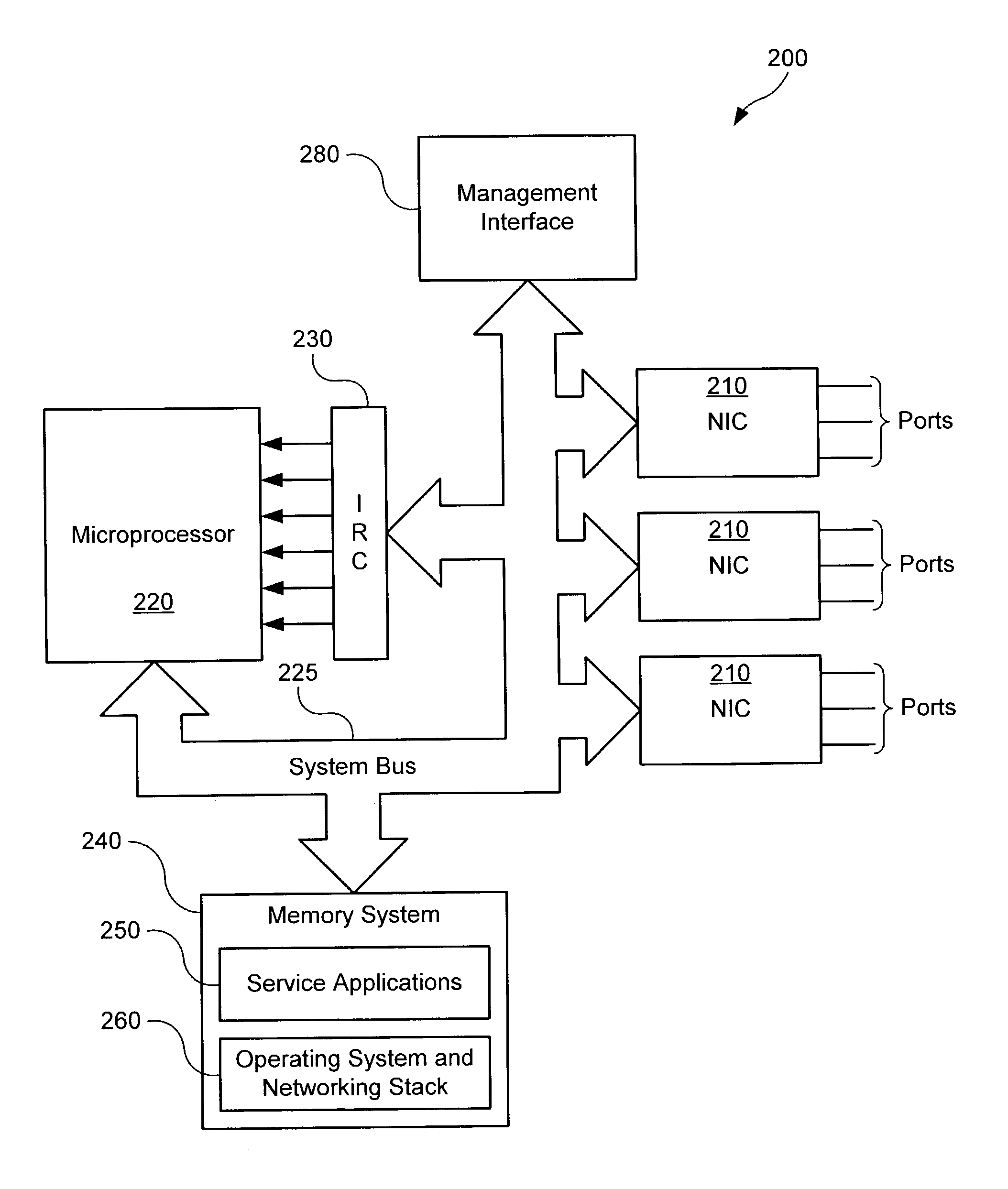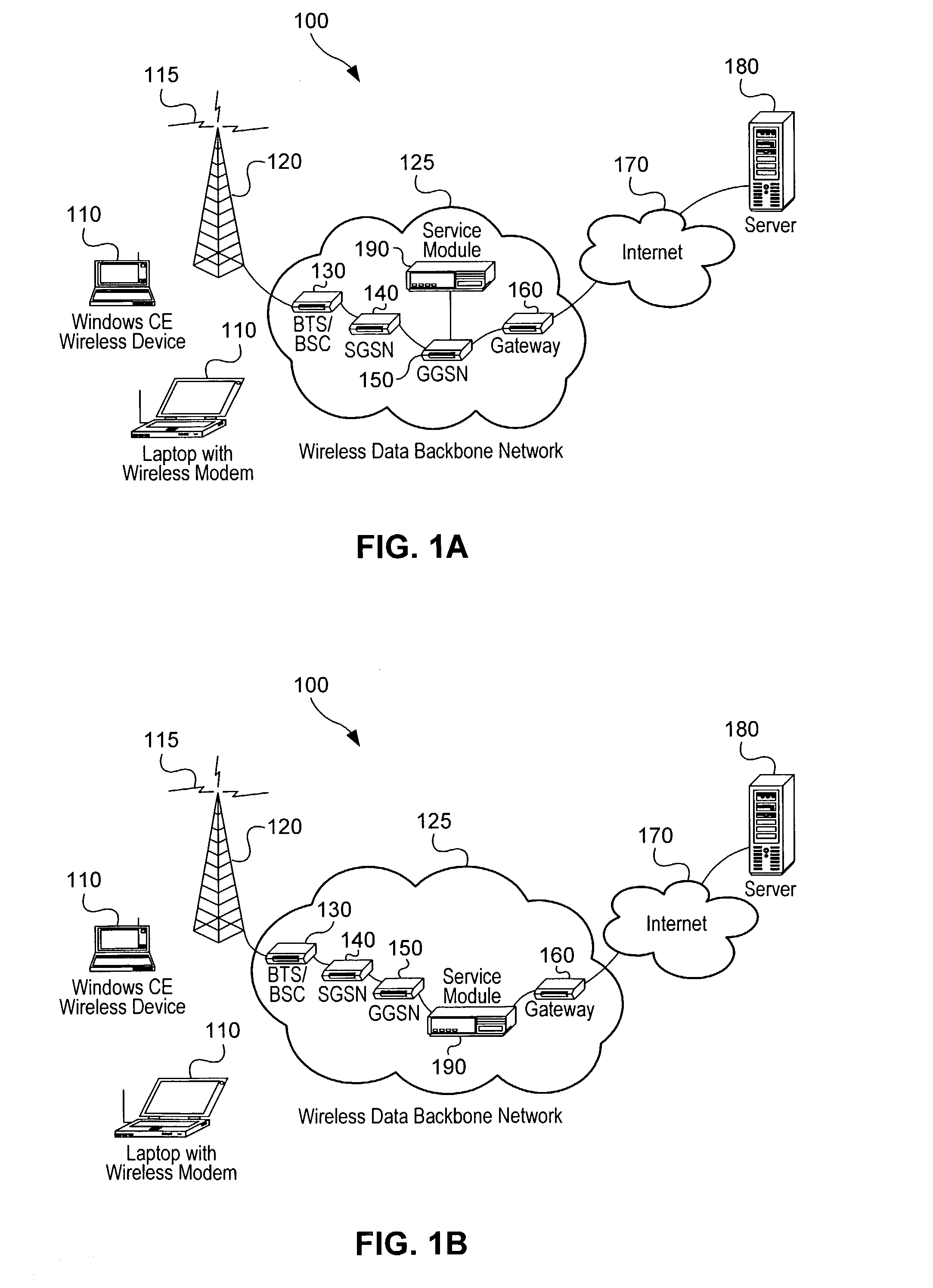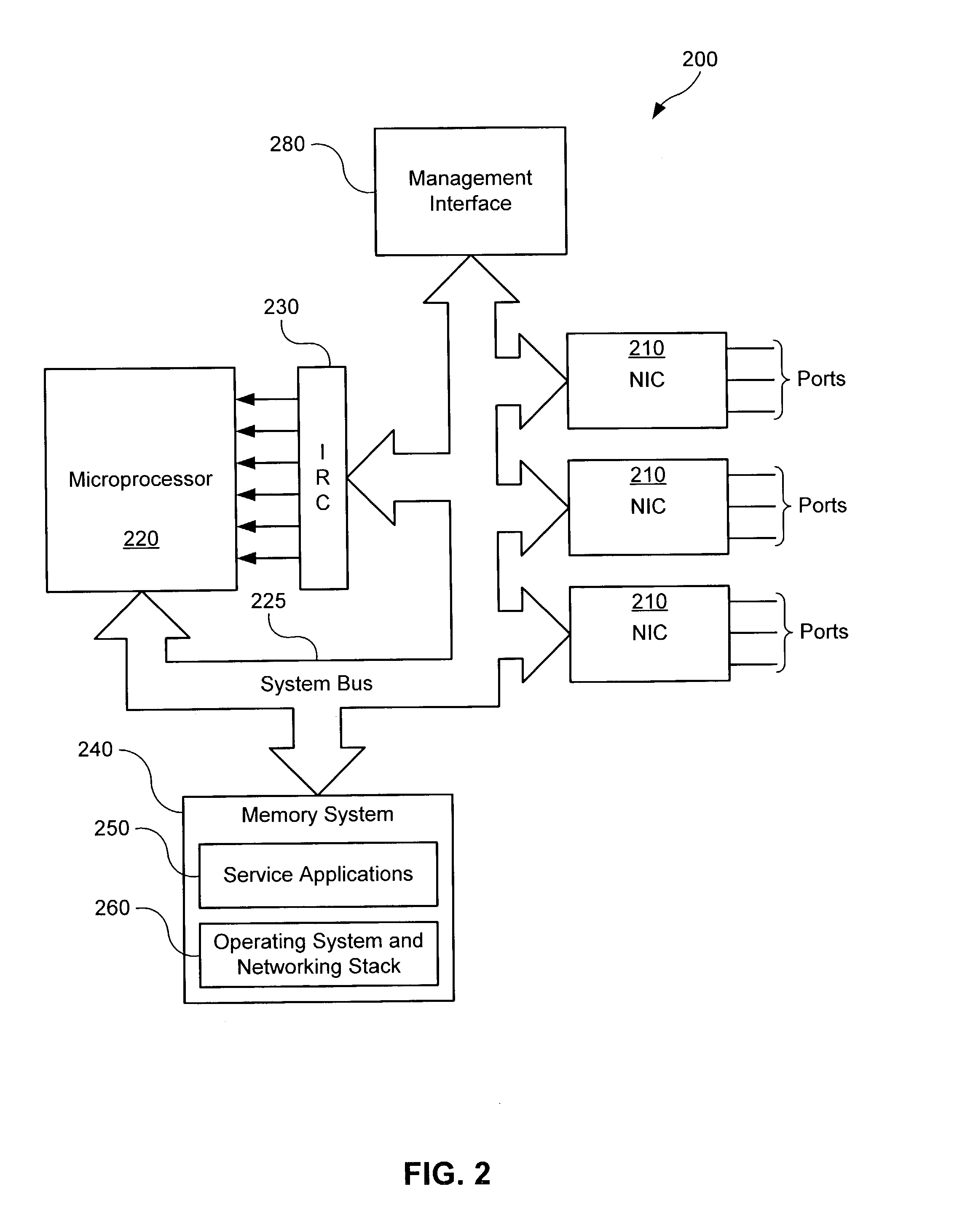Systems and methods for providing differentiated services within a network communication system
a network communication system and service technology, applied in the field of network communication systems, can solve the problems of not designing the network infrastructure, many limitations of a single, ubiquitous design, and the network infrastructure has become increasingly apparent, so as to reduce the performance penalty, reduce the cost of network infrastructure, and improve the effect of network communication system performan
- Summary
- Abstract
- Description
- Claims
- Application Information
AI Technical Summary
Benefits of technology
Problems solved by technology
Method used
Image
Examples
Embodiment Construction
[0029]Aspects of the present invention provide systems and methods for providing differentiated services within a communications network. The following description is presented to enable a person skilled in the art to make and use the invention. Descriptions of specific applications are provided only as examples. Various modifications, substitutions and variations of the preferred embodiment will be readily apparent to those skilled in the art, and the generic principles defined herein may be applied to other embodiments and applications without departing from the spirit and scope of the invention. Thus, the present invention is not intended to be limited to the described or illustrated embodiments, and should be accorded the widest scope consistent with the principles and features disclosed herein.
[0030]It should also be noted that embodiments of the present invention may provide certain advantages in the context of a wireless communication system in that particular service applica...
PUM
 Login to View More
Login to View More Abstract
Description
Claims
Application Information
 Login to View More
Login to View More - R&D
- Intellectual Property
- Life Sciences
- Materials
- Tech Scout
- Unparalleled Data Quality
- Higher Quality Content
- 60% Fewer Hallucinations
Browse by: Latest US Patents, China's latest patents, Technical Efficacy Thesaurus, Application Domain, Technology Topic, Popular Technical Reports.
© 2025 PatSnap. All rights reserved.Legal|Privacy policy|Modern Slavery Act Transparency Statement|Sitemap|About US| Contact US: help@patsnap.com



